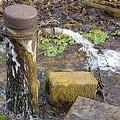 大量使用化學藥劑來防制植物害蟲在美國已行之有年,而最近一份研究報告則指出,在1993年到2003年期間,僅有少數的除草劑殘留在井水中。
大量使用化學藥劑來防制植物害蟲在美國已行之有年,而最近一份研究報告則指出,在1993年到2003年期間,僅有少數的除草劑殘留在井水中。
美國地質調查局在9/10月的《環境品質期刊》中,發表了第一份針對美國地下水中殘留除草劑的研究報告。
此份研究的目標之一,是追溯過去使用的各種除草劑和殺蟲劑殘留的情況。
此研究為美國水質評估計劃的一部分,該項計劃由聯邦政府資助、美國地質調查局執行,目的在於幫忙民眾認識水質狀態,或是這些狀態在地方、區域或全國範圍等不同層級上會如何改變,不論是改善或惡化,以及自然環境和人類活動對於水質狀態會造成哪些影響。
過去10到20年間,殺蟲劑探測頻率和地下水中的含量濃度在美國地區或全國性範圍已有所改變,而主要的原因在於殺蟲劑的使用限制、化學禁令和新殺蟲劑化合物的引進。
美國各水井網絡分別在1993年到1995年和2001年到2003年期間接受取樣,這些網絡提供了大範圍水文地質背景的概況、主要農地區域作物種類以及其所使用的殺蟲劑、除草劑的變化。
在取樣分析的80種殺蟲劑化合物中,只有6種化合物分別在2次取樣的10個水井中被檢測出來。
這些化合物的濃度大致上少於0.12ppb,較美國環保署現行飲用水標準低了10幾倍。
美國有毒物質及疾病登記署就指出,被噴灑在農作物上的「草脫淨」(Atrazine),會從土壤中被沖刷到溪流或地下水中,因為不易分解,因此會在水中殘留相當長的時間。
曝露在高濃度「草脫淨」的動物,已出現先天性缺陷、肝、腎或心臟損害等症狀,美國有毒物質及疾病登記署表示,少數人類動物研究數據已顯示,長期接觸草脫淨可能導致癌症的發生。
水文學者貝克斯菲爾德(Laura Bexfield)在其報告中寫道,在判斷地下水系統如何因應殺蟲劑使用和土地管理政策的改變時,對這些變化趨勢有更多的認識是相當重要的。
The widespread use of chemicals to control plant pests across the United States has been happening for decades, yet a newly released study shows that only a few herbicides have persisted in well water over the 10 years from 1993 to 2003.
Results for one of the first national studies on the presence of herbicides in groundwater is published by the U.S. Geological Survey in the September-October issue of the "Journal of Environmental Quality."
One goal of the study was to track the retention of various types herbicides and pesticides used over the years.
The study is a part of the National Water Quality Assessment Program, federally funded and conducted by the USGS. It aims to provide an understanding of water quality conditions and how those conditions may vary locally, regionally, and nationally; whether conditions are getting better or worse over time; and how natural features and human activities affect those conditions.
Changes in pesticide detection frequency and concentrations in groundwater might be expected to have occurred on a regional or national basis within the United States during at least the past 10 to 20 years as a result of targeted use restrictions and chemical bans and the introduction of new pesticide compounds.
Each well network was sampled once during 1993-1995 and once during 2001-2003. The networks provide an overview of conditions across a wide range of hydrogeologic settings and in major agricultural areas that vary in dominant crop type and pesticide or herbicide use.
Of about 80 pesticide compounds analyzed, only six compounds were detected in groundwater from at least 10 wells during both sampling events.
Concentrations of these compounds generally were less than 0.12 parts per billion, or more than 10 times lower than applicable EPA drinking water standards.
Sprayed on farm crops, atrazine may wash from soil into streams or groundwater where it will stay for a long time, because breakdown of the chemical is slow in water, according to the federal Agency for Toxic Substances.
Birth defects and liver, kidney, and heart damage have been seen in animals exposed to high levels of atrazine. There are limited human and animal data that suggest that there may be a link between atrazine exposure and various types of cancer, the agency says.
Learning more about these trends is important in determining how quickly ground water systems respond to changes in pesticide use and land management practices, Bexfield wrote, and in identifying compounds that may pose a threat to water quality before large-scale problems occur.
全文及圖片詳見:ENS


